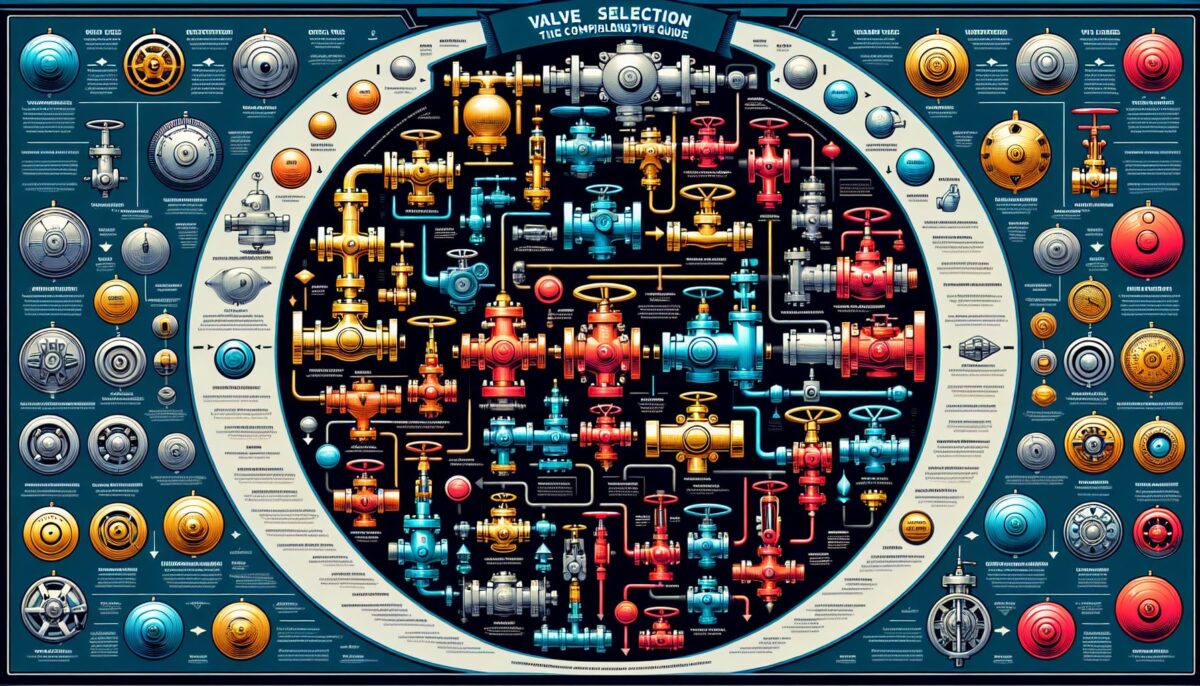When faced with the task of choosing the right valve for a specific application, the myriad options available in the market can be overwhelming. From a simple gate valve to a sophisticated solenoid valve, each type plays a pivotal role in effective system performance. In what has become an essential practice across various industries, proper valve selection is not just a matter of preference but a science that dictates reliability, efficiency, and safety. In this comprehensive guide, we will journey through the maze of valve selection, examining the critical factors, types, and best practices to ensure you make the most informed decision for your specific needs.
What is a Valve?
Before delving into selection processes, let’s revisit the basics. A valve is a mechanical device that controls the flow and pressure within a system or process. It does this by opening, closing, or partially obstructing pathways through which fluids pass. In essence, valves are the regulators of fluid systems, and their competent selection is crucial for preventing system failures.
The Importance of Valve Selection
The importance of choosing the right valve cannot be overstated. A mismatched valve can result in:
- Poor system performance
- Safety hazards like leaks or bursts
- Increased maintenance costs
- Shortened lifespan of the valve and the system
- Downtime due to unscheduled repairs or replacements
Factors Affecting Valve Selection
Choosing the right valve involves considering a plethora of factors, several of which are outlined below:
1. Type of Fluid
Valves control the flow of gases, liquids, and slurries. The physical and chemical properties of the fluid—such as viscosity, corrosiveness, and cleanliness—dictate which valve materials and types are compatible.
2. Pressure and Temperature
Valve components must withstand the system’s operational pressure and temperature without deforming or failing. Each valve is rated for certain pressure and temperature conditions.
3. Functionality
Valves serve various functions, including:
- Isolation: stopping and starting flow
- Regulation: controlling flow rate
- Non-return: preventing backflow
- Diverter: directing flow to multiple outlets
Understanding the system’s requirements aids in determining the right functionality.
4. Flow Control
Valves present different flow characteristics. Some provide a more linear flow response with the valve’s position, while others might provide a quicker shut-off.
5. Size and Connection Standards
Valve size must be suitable to handle the expected flow rates without causing excessive pressure drop. Additionally, proper end connections are necessary to ensure the valve integrates well with the existing piping system.
6. Materials of Construction
Valves are crafted from myriad materials, each offering different properties. Common materials include brass, bronze, plastic, stainless steel, and others, which are chosen based on corrosion resistance, strength, and compatibility with the fluid.
7. Actuation Method
Valves can be operated manually or with actuators. Actuators may be pneumatic, hydraulic, electric, or electromagnetic (as with solenoid valves) and are selected based on the system’s power availability and control requirements.
8. Standards and Regulations
Valve selection must take into account industry standards (ASME, ANSI, ISO, etc.) and regional safety regulations to ensure compliance.
9. Environment
The external environment—like explosive atmospheres or extreme temperatures where the valve will operate—is also critical in selection.
10. Lifecycle Cost
The total cost of owning a valve includes not only the purchase price but also installation, operation, maintenance, and replacement costs.
Types of Valves and Their Applications
Here’s a brief look at some common valves and their typical uses.
– Ball Valves:
With a quarter-turn rotary motion, these valves provide excellent shut-off capabilities. They are suitable for applications requiring tight sealing with low-pressure drop.
– Butterfly Valves:
Due to their compact design and light weight, these are ideal for large-diameter applications. They can regulate flow but are not as precise as some other types.
– Check Valves:
These are designed to prevent backflow. They’re essential in protecting pumps and compressors from damage.
– Gate Valves:
Characterized by a gate-like disc, which moves up and down, these valves are primarily for on-off control and should not be used for throttling.
– Globe Valves:
Known for their spherical bodies, globe valves are used for throttling flow and provide better sealing efficiency.
– Diaphragm Valves:
With their tight sealing capabilities, these are chosen for applications with corrosive fluids or where contamination is a concern.
– Knife Gate Valves:
Designed for on-off and isolation services, these work well with slurry, viscous, and fibrous media.
– Solenoid Valves:
Electromagnetic in operation, these valves are for controlling the flow of fluids in an automated system rapidly.
Valve Selection Best Practices
When selecting a valve, consider the following best practices:
-
Start with the application: Define the specific requirements of the system before looking at valve options.
-
Consult with experts: Work with a valve manufacturer or distributor who can provide technical guidance.
-
Consider future changes: Anticipate potential changes or expansions in the system and select a valve that allows for scalability.
-
Ask for documentation: Obtain all necessary technical data sheets and certificates, ensuring the valve meets all necessary standards and specifications.
-
Think about the whole system: Remember that the chosen valve must be compatible with other system components.
-
Don’t base decisions on price alone: The cheapest option may not always be the best choice in the long term.
Conclusion
Correct valve selection is a sophisticated yet necessary process that can greatly influence the efficiency and safety of fluid systems. By understanding the crucial factors and types of valves available, along with following best practices, the arduous task of valve selection becomes manageable. Remember, every application is unique and warrants a careful, considered approach to selecting the appropriate valve. The right choice will result in a more reliable, cost-effective, and safe system that delivers operational excellence throughout its lifecycle.
